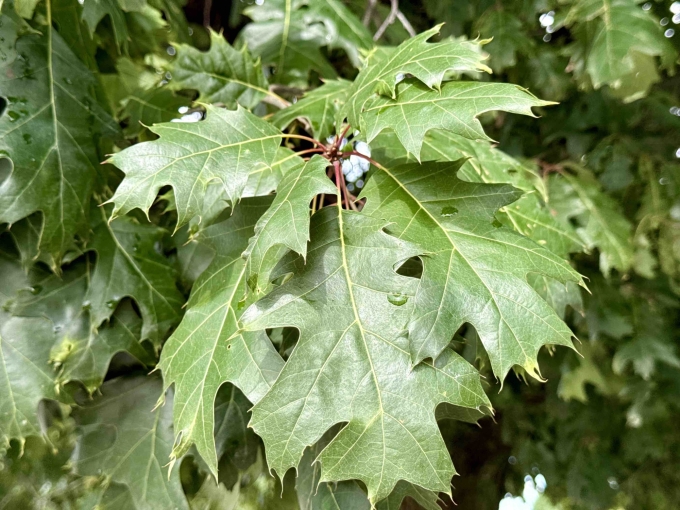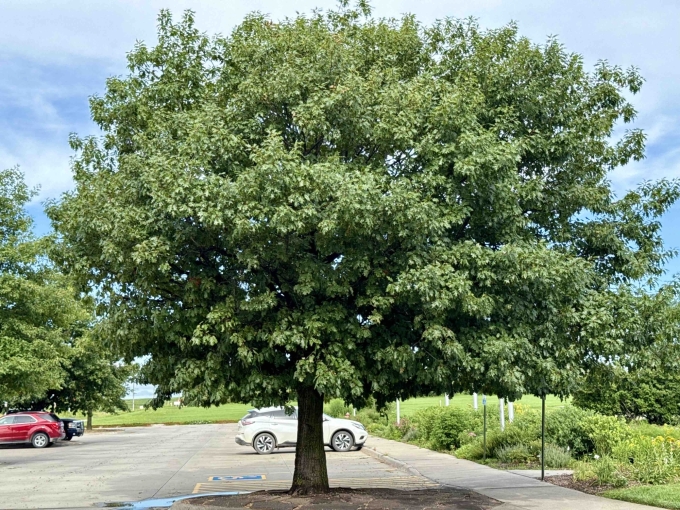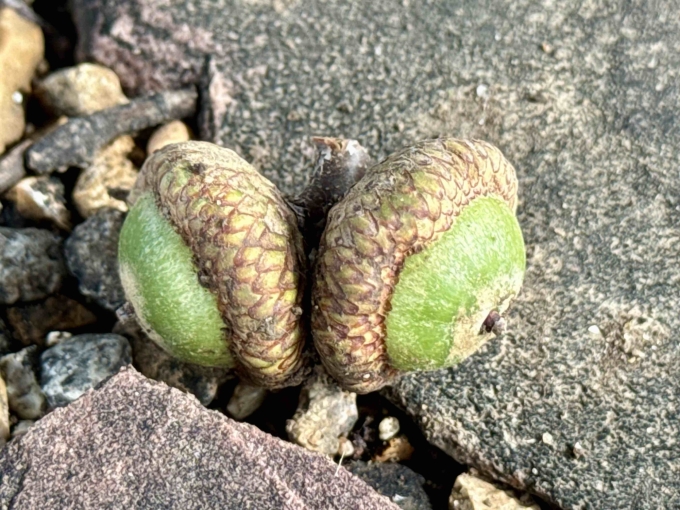Common Name: Northern Red Oak
Family: Fagaceae
Plant Type: Deciduous Tree
Native Range: Eastern and central North America; native to eastern Nebraska woodlands
Hardiness Zones: 4–8
Height: 50–75 feet
Spread: 40–60 feet
Bloom Time: Spring (April–May in Nebraska)
Bloom Description: Inconspicuous yellow-green catkins
Sun Exposure: Full sun
Water Needs: Medium
Soil Preference: Moist, well-drained, acidic to slightly alkaline soils; tolerates clay and loam
Maintenance Level: Low
Suggested Use: Shade tree, street tree, specimen tree, wildlife habitat
Attracts: Birds, squirrels, pollinators (on catkins), and other wildlife
Tolerates: Clay soils, air pollution, drought (once established)
Notable Features: Fast-growing for an oak, brilliant red fall color, strong wildlife value
Nebraska Growing Notes:
Northern Red Oak is a long-lived, stately native tree well-suited for many landscapes in eastern Nebraska. It prefers full sun and moist, well-drained soils, though it tolerates clay and drier conditions once established.
In Nebraska, it performs best in the eastern part of the state, where soils tend to be slightly more acidic and moisture is more reliable. Its relatively fast growth for an oak makes it popular as a shade tree, and its brilliant red fall foliage adds seasonal interest.
Acorns provide food for birds, deer, squirrels, and other wildlife, while the dense canopy offers shelter. Young trees may need protection from browsing deer and rabbits.
Landscape Use:
Excellent as a shade tree, specimen tree, or wildlife-supporting tree in larger landscapes, parks, and along streets where space allows. Pairs beautifully with other native hardwoods such as Carya ovata (Shagbark Hickory), Juglans nigra (Black Walnut), and understory trees like Cercis canadensis (Eastern Redbud).
Caution:
Acorns can create litter in lawns and paved areas, consider placement. Sensitive to highly alkaline soils (which can cause chlorosis), test soil pH if planting outside eastern Nebraska. May develop iron chlorosis in western Nebraska soils if not properly sited.



